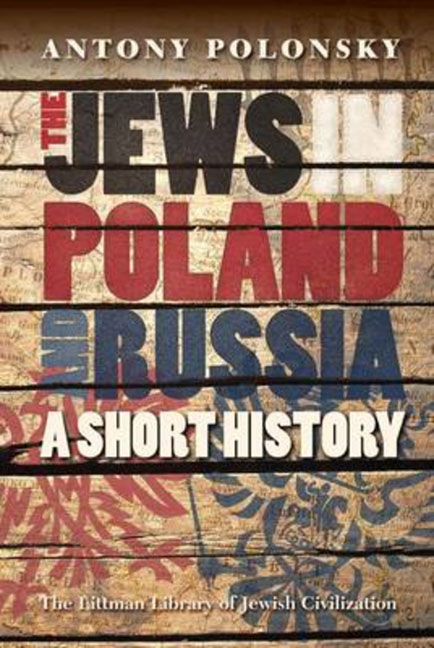Book contents
- Frontmatter
- Dedication
- Preface
- Acknowledgements
- Contents
- List of Maps
- Note on Transliteration
- Note on Place Names
- Maps
- Introduction
- 1 The Polish–Lithuanian Background
- 2 Attempts to Transform and Integrate the Jews, 1750–1881
- 3 The New Jewish Politics, 1881–1914
- 4 Social and Religious Change, 1750–1914
- 5 The First World War and its Aftermath
- 6 The Jews in Poland between the Two World Wars
- 7 Jews in Lithuania between the Two World Wars
- 8 Jews in Soviet Russia and the Soviet Union, 1921–1941
- 9 War and Genocide, 1939–1945
- 10 From the End of the Second World War to the Collapse of the Communist System
- 11 Jews in Eastern Europe and Russia since the End of Communism
- Conclusion
- Postword
- Glossary
- Notes
- Bibliography
- Index
3 - The New Jewish Politics, 1881–1914
- Frontmatter
- Dedication
- Preface
- Acknowledgements
- Contents
- List of Maps
- Note on Transliteration
- Note on Place Names
- Maps
- Introduction
- 1 The Polish–Lithuanian Background
- 2 Attempts to Transform and Integrate the Jews, 1750–1881
- 3 The New Jewish Politics, 1881–1914
- 4 Social and Religious Change, 1750–1914
- 5 The First World War and its Aftermath
- 6 The Jews in Poland between the Two World Wars
- 7 Jews in Lithuania between the Two World Wars
- 8 Jews in Soviet Russia and the Soviet Union, 1921–1941
- 9 War and Genocide, 1939–1945
- 10 From the End of the Second World War to the Collapse of the Communist System
- 11 Jews in Eastern Europe and Russia since the End of Communism
- Conclusion
- Postword
- Glossary
- Notes
- Bibliography
- Index
Summary
THE WORSENING SITUATION OF THE JEWS IN THE TSARIST EMPIRE
The years between 1881 and 1914 saw major changes in the situation of the Jews in the tsarist empire. They were now by far the largest Jewish community in the world with a population in 1897 of over 5.2 million out of a total 126 million (see Map 7), and increasing numbers came to define themselves as part of an ethnic or national community, rejecting the view that the Jews could be successfully integrated into local society. This shift was principally the result of a significant deterioration in their status here, which partly arose out of the growing disillusionment of the tsarist government with what it saw as the negative consequences of the ‘integrationist’ policies towards the Jews that it had pursued, particularly under Alexander II. Its leading bureaucrats, mainly noble in origin, with rural, aristocratic prejudices against Jews, became increasingly anti-Jewish, attributing all the ills of the empire to Jewish machinations. More and more they came to see the Jews, rather than the disruptive effects of industrialization and modernization, as the source of their difficulties. Tsarist policy had always had a dual character: on the one hand, to ‘civilize’ the Jews and turn them into useful subjects of the tsar; on the other, to minimize their ‘harmful’ effect on the rest of the society. During this period more stress was placed on the latter goal. Although government policy was marked by ignorance, glaring inconsistencies, and a lack of coherence, overall its hostility to the Jews as a group can hardly be denied.
This increasingly hostile policy towards the Jews went along with the growing revolutionary crisis in the tsarist empire. The forced modernization of Russia, which the government had been pursuing since Peter the Great and which had gathered pace following the Balkan crisis of 1876–8, which had revealed the gap between Russia's foreign policy ambitions and its ability to realize them, had led to rising social and political tensions. These exploded in the revolution of 1905. Although this particular threat had been contained and had led to the establishment of a semi-constitutional system, the problems the regime faced were not effectively confronted, and in the last years before the First World War, with the fall of the reformist Stolypin government and the resurgence of large-scale labour unrest, the revolutionary challenge again became pressing.
- Type
- Chapter
- Information
- The Jews in Poland and Russia: A Short History , pp. 96 - 134Publisher: Liverpool University PressPrint publication year: 2013

